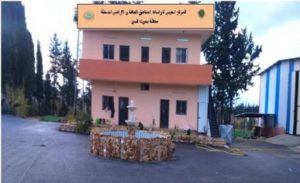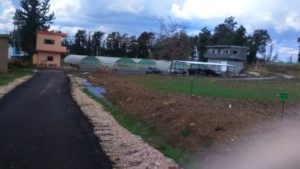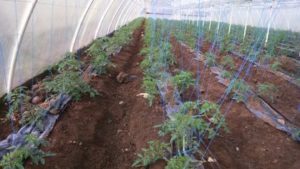Al-Sinn Research Station
It was established in the year 2015 in the governorate of Lattakia, It was  established in the year 2015 in the governorate of Lattakia, Jableh district-Hraysoun, at an altitude of 15 m above the sea, with an area of 100 dunums. It enjoys a Mediterranean climate which is cold and rainy in winter, and hot and dry in summer, and has a rainfall average of 800 mm annually. Its soil is red, heavily clay and poor with organic matter.
established in the year 2015 in the governorate of Lattakia, Jableh district-Hraysoun, at an altitude of 15 m above the sea, with an area of 100 dunums. It enjoys a Mediterranean climate which is cold and rainy in winter, and hot and dry in summer, and has a rainfall average of 800 mm annually. Its soil is red, heavily clay and poor with organic matter.
Objective:
-
Study hydrological relations under the area’s conditions to increase the productivity per unit of water.

- Study and evaluate the various agricultural crops to select the appropriate crop type.
- Provide applied extension packages and scientific services to those who are interested in the various agricultural activities in the area.
 Organize training courses in the fields of agricultural development, especially for the young graduates.
Organize training courses in the fields of agricultural development, especially for the young graduates.- Raise the productivity of field crops, medical and aromatic plants, fruit trees and protected cultivations, and develop the Arab human resources knowledge in the fields of environment and development.
- Test the reaction of the cereal program entries of durum wheat, bread wheat and barley towards rust diseases (black stem rust, yellow leaf rust and leaf spot diseases).
Infrastructure:
- Administrative offices and warehouses.
- Laboratories for analyzing, isolating and characterizing the pathogens of plant diseases.
Activities:
- Study the water requirements of some economic plant species and crops to raise the productive efficiency per unit of water.
- Raise field crops productivity under rainfed and irrigated conditions.

- Propagate and develop medical and aromatic plants and fruit trees.
- Improve the productivity of the various varieties of fruits under rainfed cultivation conditions, and develop their tolerance towards environmental stresses by applying the recommended appropriate packages for the area.
- Evaluate and improve vegetable productivity, and develop their adaptation to rainfed cultivation.
- Use organic fertilization as an alternative to chemical fertilizers to improve soil, conserve environment, increase the use of protected agriculture systems in the seedlings production and gain a feasible revenue.




